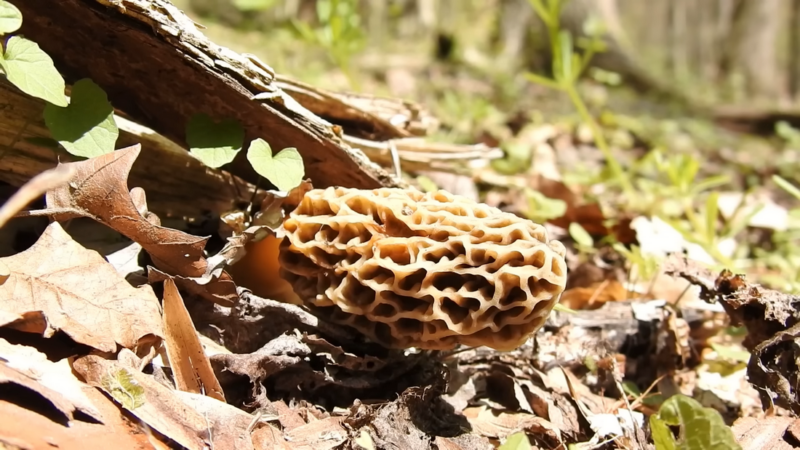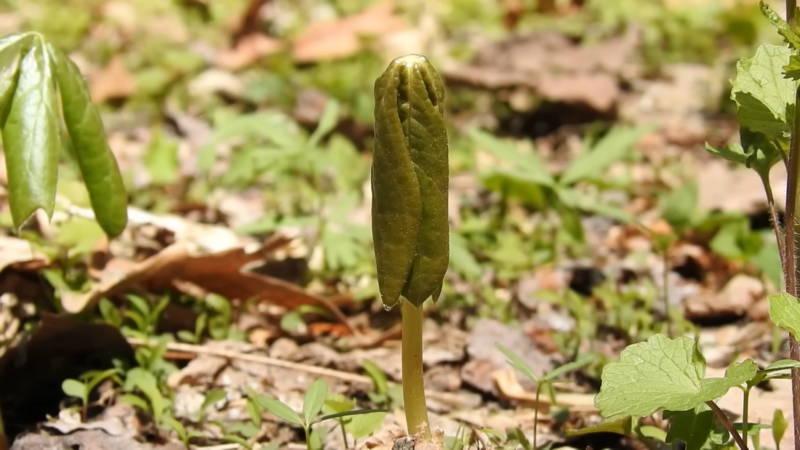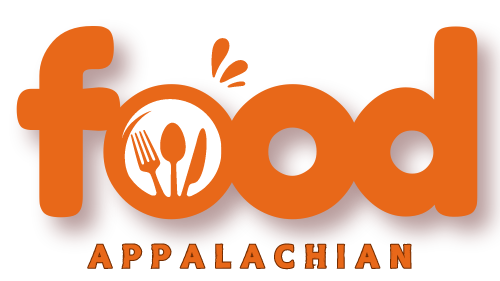Morel mushrooms are a unique and highly sought-after delicacy known for their distinctive appearance and rich, earthy flavor.
They are particularly cherished by foragers and chefs alike.
Today, I will share information to help you understand where to find, how to prepare, and the best ways to cook these gourmet mushrooms.
Finding Morel Mushrooms
Foraging for morel mushrooms is both an exciting and rewarding activity. These mushrooms typically grow in forests, especially in areas with:
- Elm
- Sycamore
- Ash
- Poplar
- Pine trees
They are often found in moist, well-drained soils, and prefer areas that have recently experienced some form of disturbance, like a forest fire or logging.
The best time to forage for morels is from mid-April to mid-May, depending on the region and weather conditions.
Look for them after a rain when the ground is warm and damp.
One of the key tips for successful foraging is to focus on areas with dying elm trees, as morels tend to thrive around them.
They can typically be found on south-facing slopes early in the season and north-facing slopes later on.
Buying Morel Mushrooms
If foraging isn’t an option, buying morel mushrooms from specialty food marketplaces like Foraged is a great alternative.
When selecting morels, look for firm and dry mushrooms with a honeycomb-like texture.
Avoid morels that are slimy, discolored, or have a musty odor, as these are signs of poor quality.
Fresh morels should have a pleasant, earthy smell and a slightly spongy feel.
Preparing Morel Mushrooms
Thorough cleaning of morel mushrooms is essential to remove dirt, insects, and other debris that can be trapped in their intricate caps.
Start by gently brushing off any visible dirt using a soft-bristled brush or a damp cloth.
Morels can also be soaked briefly in salt water to help dislodge any stubborn particles and insects.
Rinse them quickly under cold water after soaking to remove any remaining salt.
Safety Precautions
It’s important to note that morel mushrooms should never be consumed raw, as they contain compounds that can cause gastrointestinal distress.
Cooking morels thoroughly neutralizes these toxins and makes them safe to eat.
Always ensure that morels are fully cooked before incorporating them into dishes.
Cooking Morel Mushrooms

Sautéing is a popular method for cooking morel mushrooms. Begin by heating a pan over medium-high heat and adding butter or oil.
Once the fat is hot, add the cleaned morels, garlic, and herbs such as thyme or parsley.
Sauté until the morels are golden brown and tender, usually about 5–7 minutes.
Sautéed morels can be served as a side dish, or added to omelets, risottos, and pasta dishes for an added burst of flavor.
Roasting Morels
Roasting morels brings out their natural sweetness and earthy flavor. Preheat your oven to 375 °F. Toss the morels with olive oil and seasonings of your choice.
Spread them in a single layer on a baking sheet and roast for 10–15 minutes until they are tender and slightly crispy on the edges.
Roasted morels are a great addition to salads, grain bowls, or as a topping for meats.
Frying Morels

Fried morels are a crunchy and flavorful treat. Start by dipping the cleaned morels in an egg wash, then coat them in seasoned flour or breadcrumbs.
Heat oil in a skillet to 325 °F (ca. 163 °C)-350 °F (ca. -212 °C) and fry the morels for 3–4 minutes per side until golden brown.
Fried morels make a delicious snack or appetizer and can be paired with dipping sauces.
Adding Morels into Sauces and Soups
Morel mushrooms can enhance the flavor of sauces and soups. To add morels to sauces, sauté them first, then deg laze the pan with wine or broth.
Finish with cream for a rich sauce that pairs well with meats and vegetables.
For soups, combine morels with spring ingredients like asparagus, peas, and fresh herbs to create a vibrant and seasonal dish.
Stuffing and Baking Morels
Stuffed morels are a gourmet delight. Prepare a savory stuffing with ingredients like roasted vegetables, cheese, and herbs.
Fill the morels with the mixture and place them on a baking sheet.
Bake in a preheated oven at 375 °F (ca. 191 °C) for 15–20 minutes until the morels are tender and the stuffing is heated through.
Preserving Morel Mushrooms
Drying is an effective way to preserve morel mushrooms for later use. Use a food dehydrator or a low-temperature oven to dry the morels until they are completely dehydrated.
Store the dried morels in an airtight container in a cool, dark place. Rehydrate them by soaking them in warm water before using them in recipes.
Pickling Morels
Pickling is another method to preserve morels while adding a tangy flavor. Combine vinegar, water, sugar, salt, and aromatics like garlic and dill to create a pickling solution.
Simmer the morels in the solution, then transfer them to sterilized jars. Store the pickled morels in the refrigerator for at least a month to develop their flavor.
Morel Mushroom Powder
Morel mushroom powder is a versatile seasoning. To make it, grind dried morels into a fine powder using a spice grinder.
This powder can be used to add a concentrated morel flavor to soups, sauces, and other dishes.
Morel Mushroom Butter and Duxelles
Create a luxurious morel mushroom butter by sautéing chopped morels with garlic and fresh herbs, then mixing them into softened butter.
This compound butter can be used to enhance steaks, vegetables, and bread.
Duxelles is another preparation involving finely chopped morels sautéed with shallots, garlic, and herbs. It can be used as a filling or spread.
The Bottom Line
Morel mushrooms are a unique and versatile ingredient with a distinctive flavor that can enhance a variety of dishes.
Remember to forage sustainably and support small-scale food purveyors to ensure future harvests of these delightful mushrooms.

